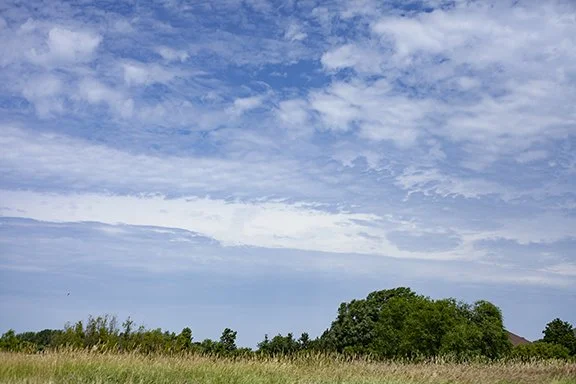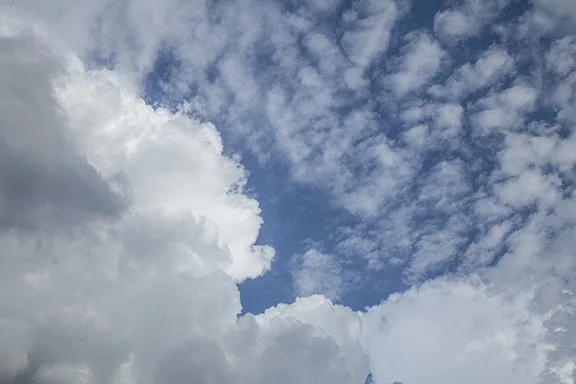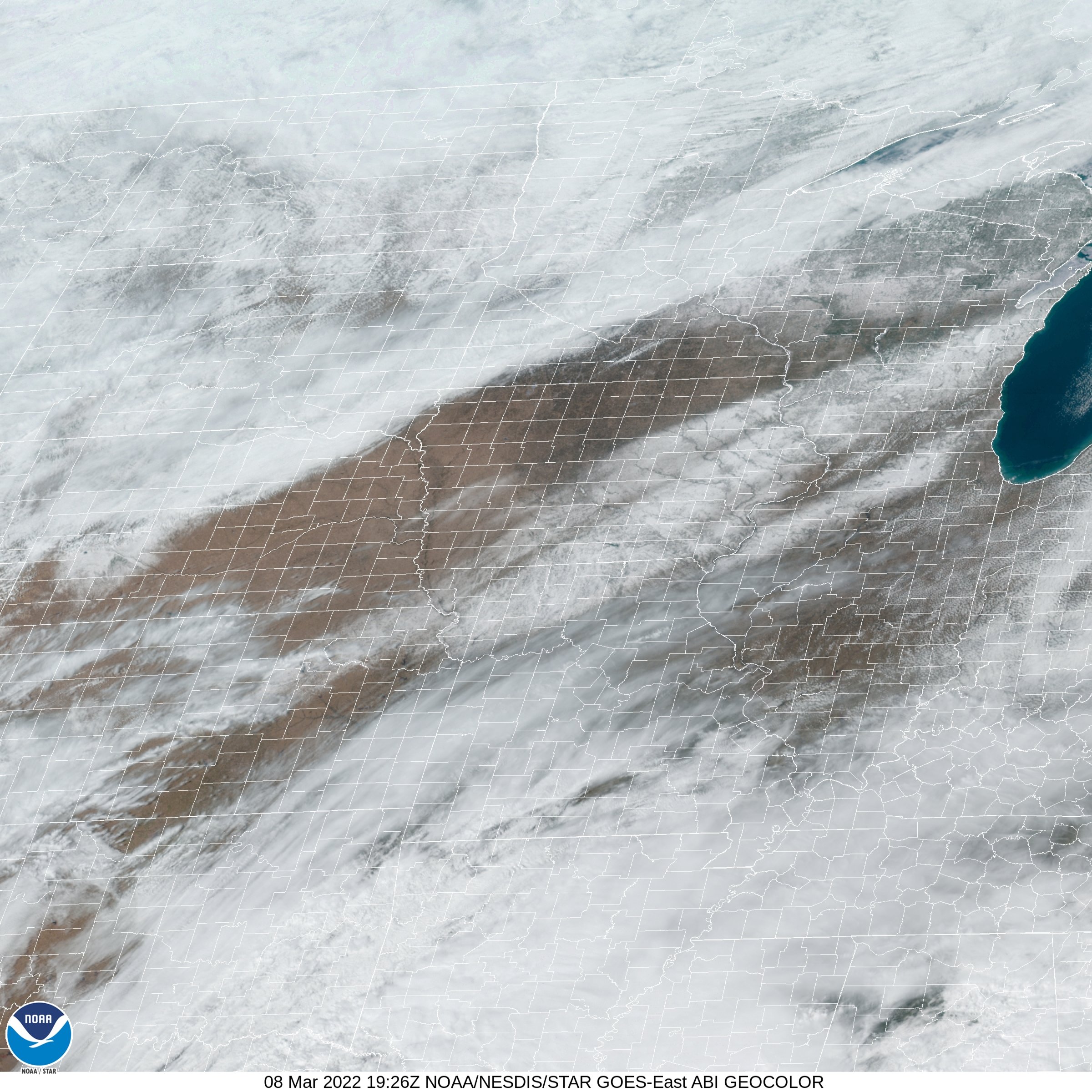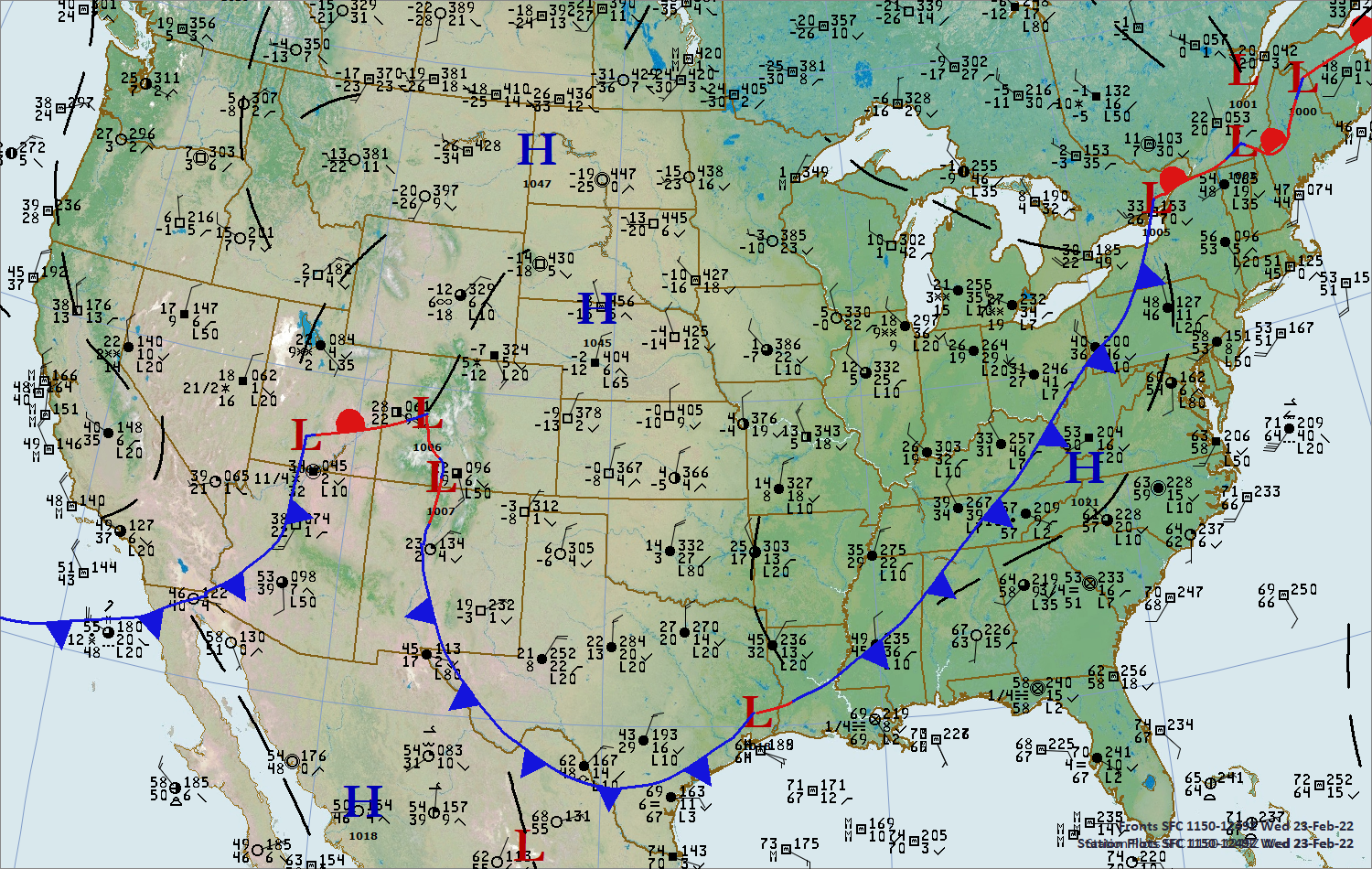Low pressure centered in Kansas this morning will move northeast with warmer temperatures on its east side and colder air flowing into the western side during the next 48 hours. Click the map below to learn how to read the station model plots on the map. Pick a station(s) in the middle of the United States and follow the changes in temperature, wind direction/speed, dew point, pressure, and weather as the storm moves northeast. You may follow the storm by using the links to the National Weather Service, Storm Prediction Center, Weather Prediction Center, GOES Satellite, and Radar information on our home page.
Example: This morning at 5:00 a.m. CDT Des Moines, Iowa reports a temperature of 45 F, wind from the SE at 10 knots (12 mph), with a partly cloudy sky. The air pressure was rising but is now falling and is 1009.0 millibars. The air is dry around the storm system this morning but notice the dew point of 55 Shreveport, Louisiana. It indicates low level moisture from the Gulf of Mexico is working its way north ahead of the developing Kansas low center. Watch dew points rise as the moisture spreads north.
To the west dry air with dew points in the 30s, 20s, and low teens in Texas with 6 reported in the northeast corner of New Mexico and single digit dew points across all of that state. High winds and severe weather is likely with this storm. The colder air is still north of the Canada-U.S. border, well behind a cold front from NW Minnesota, to the Dakotas. These air masses will be converging over the central U.S. during the next few days as the storm intensifies and moves toward the Upper Great Lakes.













































